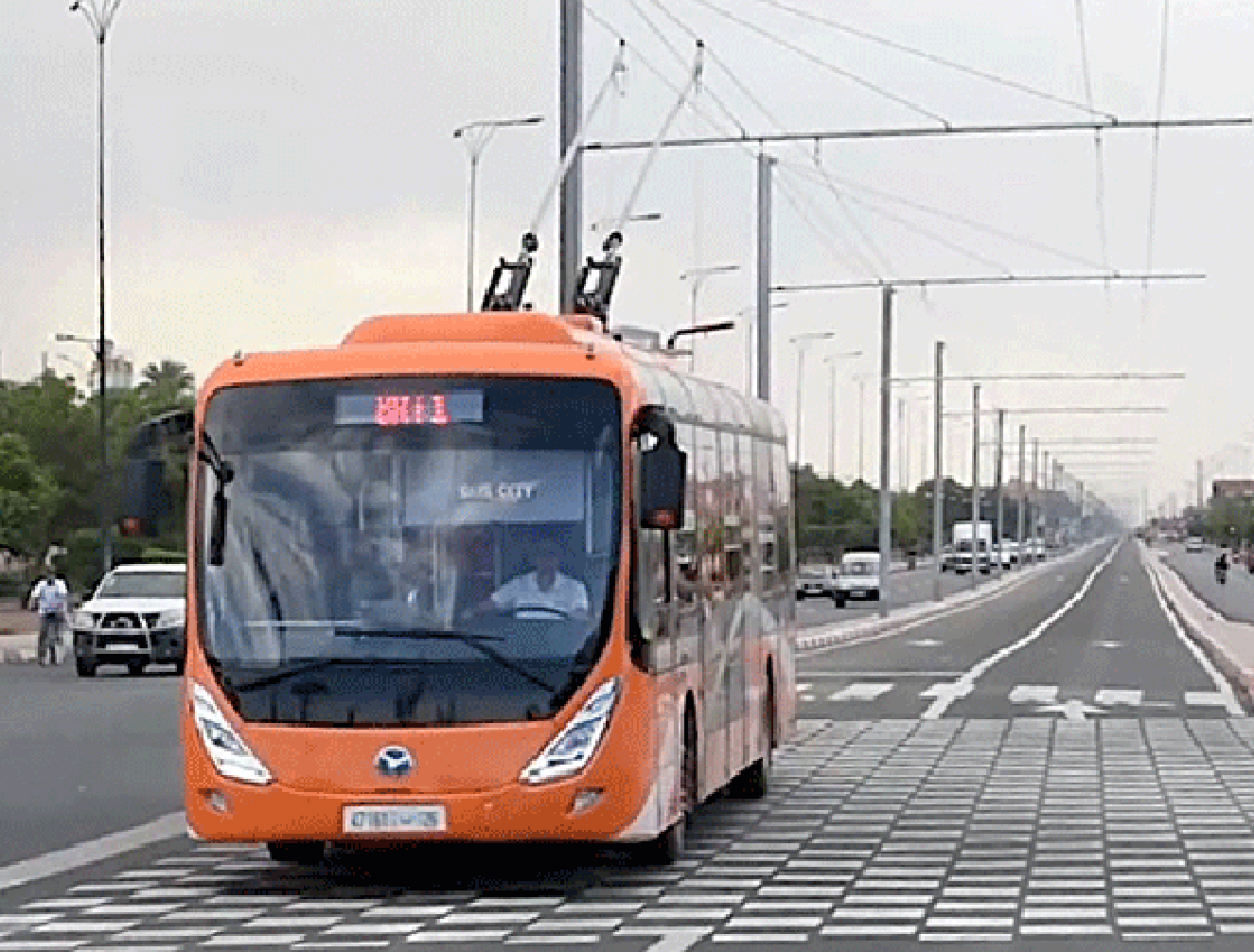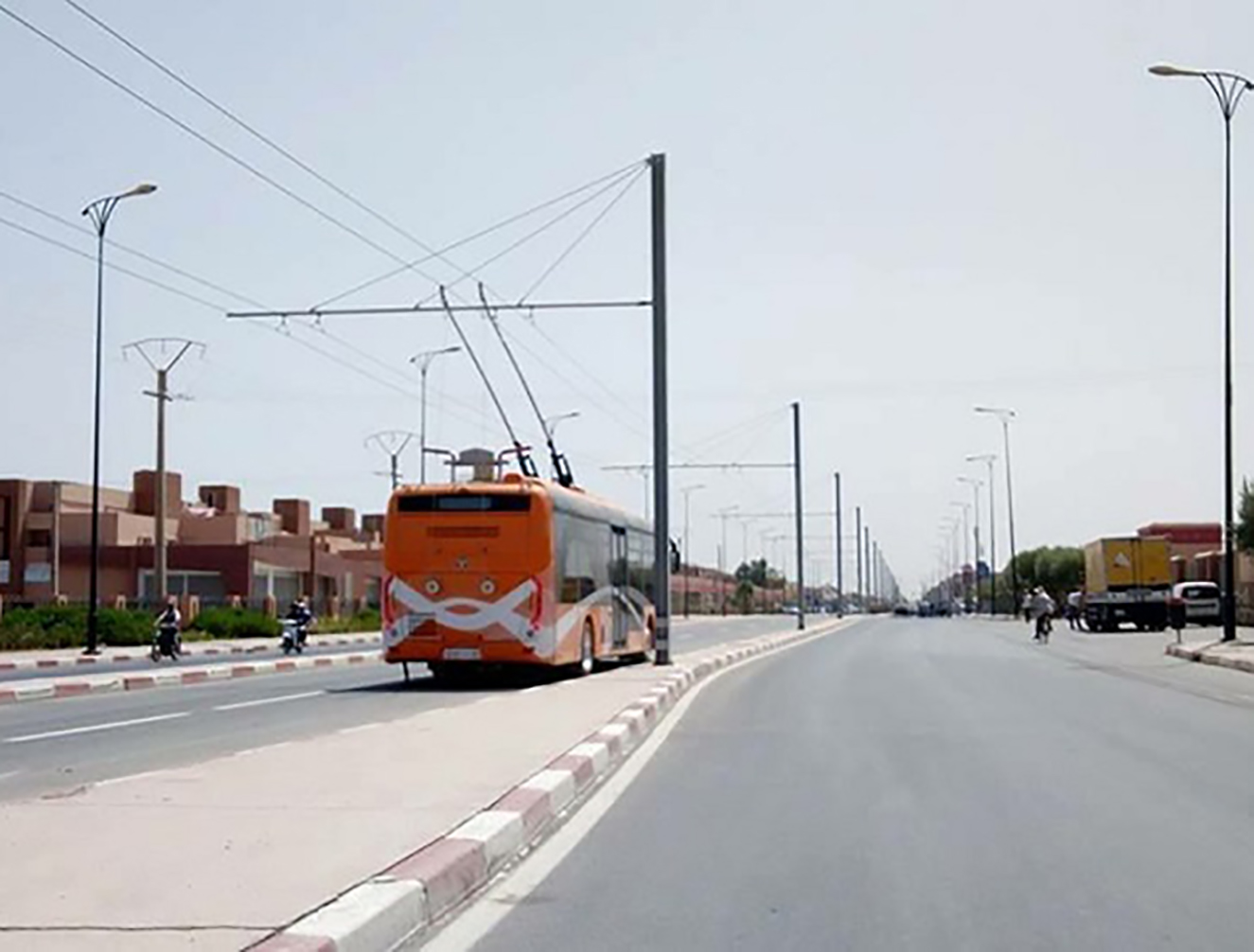
Close

Approach Words: Integrated City, Sustainability, Urban Livability
Public Policy Instruments: Communicative, Financial Mechanism, Physical Intervention
The Bus Rapid Transit (BRT) in Marrakesh is a public transport system utilizing electric buses with high capacity, and operating in dedicated lanes1. The announcement of this project took place during the COP22 summit held in Marrakech in November 20162. The project aims to enhance the quality of life of the citizens of Marrakesh by providing a sustainable solution to their public transportation needs.
The project also aims to transport more than 45,000 citizens on a daily basis across the city3. It envisions to do this by connecting peripheral neighborhoods with two central downtown hubs, by establishing four transit lines and interchanges at Douar Al Askar, Bab Doukkala, and Jamaa el Fna as follows4.

Title: BRT Marrakesh lines.
Source: Click Here

Title: BRT line 1 in Marrakech on Essaouira Avenue.
Source: Click Here

Title: Interior view of the BRT Marrakesh.
Source: Click Here

Title: The dedicated lanes for buses.
Source: Click Here



The project is an effective example of sustainable transportation in Morocco as it is environmentally friendly, as the power supply comes from a solar power plant built as part of the project15. As such, and to facilitate the low-carbon integration of the Bus Rapid Transit (BRT) System being implemented by the City of Marrakech, a 1 MW solar farm utilizing High Concentration Photovoltaics (HCPV) technology will be installed funded by GEF Trust Fund. The energy generated by the farm will be utilized to support electric buses, demonstrating an integrated low-carbon transportation system that can serve as a model for replication in other cities across Morocco16.
The project is initiated by the Bus City Motajadida17, a local development company in charge of delivering a clean urban transport system18. It is operated by ALSA Marrakesh that entered the Moroccan market in 1999, establishing its presence in Marrakech as the urban transport provider. Since then, ALSA Marrakech’s transportation network has experienced substantial growth, expanding to encompass 45 lines. This expansion has greatly enhanced the provision of efficient services to the residents of Marrakech and its surrounding region 19 20. The overall cost of this project is around 270 million Moroccan Dirhams21 . The project was funded by the Global Environment Facility22. On March 21, 2023, the development company Bus City Motajadida declared the trio of Ingerop, Novec, and Atelier 1 the winners of the contract to conduct preliminary studies for bus rapid transit (BRT) lines 1, 4, 5, and 6 in 23.
Project Link
https://www.alsa.ma/en/marrakech/electric-bus
Endnotes
References